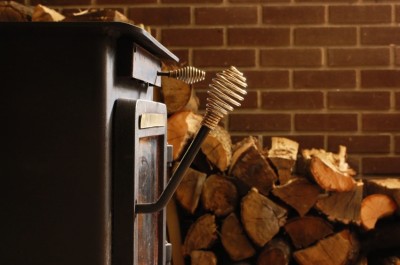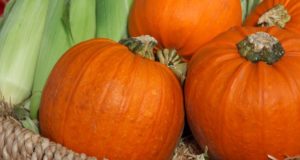 With the 2013-2014 propane shortage in the United States, interest in wood-burning stoves has increased. Although wood burning stoves may not heat a home as efficiently as a propane powered central heating system, they are simple, reliable and easy to operate. Even in a power outage, you can count on a wood-burning stove to keep your home toasty warm.
With the 2013-2014 propane shortage in the United States, interest in wood-burning stoves has increased. Although wood burning stoves may not heat a home as efficiently as a propane powered central heating system, they are simple, reliable and easy to operate. Even in a power outage, you can count on a wood-burning stove to keep your home toasty warm.
The EPA has recently cracked down on wood-burning stove emissions, setting tighter standards for particulate emissions. This has led to a number of stoves being pulled off the market for not meeting these new regulations. Even so, there are still a fair number of models available on the market, with new EPA compliant ones coming out all the time. So there is little risk that wood-burning stoves will be totally banned, making them one of the best possible choices for emergency heating.
While there are many people who are bemoaning the government interference of these new regulations, they do provide a benefit to the homeowner. Not only do these stoves burn cleaner, the secondary burn required to make them clean up the emissions makes for a much more efficient stove, producing the same amount of heat from much less wood.
Of course, not all wood-burning stoves are created equal. Different designs will produce different amounts of heat and transfer that heat to the home with different efficiency levels. If you are in the market for a new wood-burning stove, you should be sure to check out the efficiency. Most of the new EPA compliant stoves have heating efficiency ratings of 80 to 85 percent, although a few are down in the 70s. In addition to efficiency, the size of the stove needs to match the size of the room that you are trying to heat with it.
The type of wood you choose to burn in your stove makes a difference, as well. Pound for pound, all wood contains about the same amount of energy. However, not all wood has the same density. A cord of hickory is going to weigh much more than a cord of hemlock, meaning that there is going to be much more potential heat energy in that cord of hickory than there is in the hemlock.
The Most Versatile Backup Stove In The World Allows You To Cook Anything, Any Time, Any Where
As a general rule of thumb, the denser the wood, the more heat energy per cubic foot of wood or per cord. Since wood is sold by the cord (which is a volume measurement) and not by weight, this means that spending the extra money to buy a cord of good hardwood is a good investment, as it will provide much more heat for your home.
A high density wood can actually have as much as twice the heat energy stored in it as a low density wood. So if you have to spend 50 percent more to buy oak than you would to buy pine, you’re probably getting a bargain. The oak will provide you with enough additional heat to more than cover the difference in the cost between the two.
In addition to providing more heat, the wood will burn longer. This will reduce the amount of time you have to spend attending the fire in your stove and the number of trips you have to make to the woodpile. Even more important than that, it will probably make it so that your home is warmer in the morning when you wake up, because the logs you threw in the stove before going to bed will still have some coals burning in the morning.
There are a lot of different types of woods that you might find sold as fuel for a wood burning stove, depending upon the part of the country you live in. Typically, two or three different types of wood that are common to the area will be sold. Of these, you can count on them varying considerably in their overall density. Common woods used include, listed here from most dense to least dense:
- Rock Elm
- Shagbark hickory
- White Oak
- Butternut hickory
- Beech
- Red Oak
- Yellow birch
- Red elm
- White ash
- White elm
- Mesquite
- Black locust
In addition to the density of the wood, you want to pay attention to the amount of resin or sap the wood has. Some woods, like pine and cedar, have a lot of resin in them. When this resin burns, it makes deposits on the sides of the chimney, dirtying it up faster. Therefore, these types of woods should be avoided, except in small amounts to help start a fire.
Additionally, you need to be concerned about the moisture content of the wood. Freshly cut wood has a moisture content of about 50 percent. With this much moisture, it won’t burn as efficiently or produce as much heat. Essentially, a lot of the heat produced will be absorbed by the water, as the water evaporates. This process requires a lot of heat, which will not be available for heating your home.
Wet wood is much easier to split than dry wood is. It will also dry out faster if it is wet. So the best thing to do is to split the wood when it arrives and is still green (assuming it isn’t already split) and then stack it for drying. Cover the stack of wood with a tarp, but don’t allow the tarp to go all the way to the ground. In six months or so, the wood’s moisture content will be about 20 to 25 percent, ideal for burning.
You can tell if wood has dried sufficiently for your wood-burning stove by looking at it over time. As the wood dries, the color will change and the cellular structure of the wood will shrink slightly, causing cracks to form in the end grain of the wood. You will also notice that the bark is falling off the wood, as the bark needs the moist inner bark layer to hold it on the log.
If you are forced to burn wood that hasn’t had enough time to dry properly, bring the wood into the house to dry and place it near the stove. While that will absorb some of the heat that is needed to heat your home, it won’t absorb as much as it would while in the stove.
Sign up for Off The Grid News’ weekly email and stay informed about the issues important to you
 Off The Grid News Better Ideas For Off The Grid Living
Off The Grid News Better Ideas For Off The Grid Living




